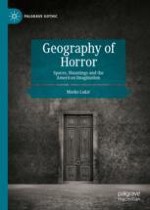Abstract
The urge to map a certain space, to define an area, a region or some other previously unexplored location, and to define its different parameters and characteristics is an innate trait found at the core of human behavior. Whether it is done from an empirical, strict, and goal-oriented standpoint—as part of a straightforward geographical task, a fearful inscription of meaning and value stemmed from the yet unknown and unexplored space—or it is just a fanciful imaginary exploration of actual or fictitious spaces, the necessity to create maps of particular surroundings (real or not) remains a constant of human nature. This urge is echoed in countless praxes, theoretical and practical analyses and musings, from the ancient Babylonian Imago Mundi and the European Mappa Mundi, contemporary readings of the role and function of space, to the obsessive mapping of any and all newly discovered spaces, such as the virtual space of the internet and the surface of Mars as seen through the lens of the latest rover. Despite this overwhelming historical tendency to address and give meaning to space, it is not until 1967, and the lecture titled “Of Other Spaces” given by Michel Foucault, that an actual awareness of the importance of space emerged within, what will come to be, a transdisciplinary context. Referring to history as an idea that dominated the nineteenth century, Foucault proposes a different understanding of contemporaneity, one based on the acknowledgment and experience of space: “The present epoch will perhaps be above all the epoch of space. We are in the epoch of simultaneity: we are in the epoch of juxtaposition, the epoch of the near and far, of the side-by-side, of the dispersed. We are at a moment, I believe, when our experience of the world is less that of a long life developing through time than that of a network that connects points and intersects with its own skein” (1986, 22). A more contemporary summarization of this issue, as well as an obsession, can be found in the elaborations of Robert T. Tally, where, by stating, “I map, therefore I am” (2019, 1), he discusses mapping as something essential to our beings. Despite its ostensible simplicity, Tally’s statement, obviously followed by an extensive and detailed study of mapping, space, and spatiality, successfully conveys the human obsession with the need to define the surrounding unexplored spaces. Furthermore, this need is only amplified by the connection between these spaces and our own identity, where humans intertwine their own identity with their surroundings through what could be defined as an autoreferential loop. What begins with the locating of a body within a particular space soon develops into a discourse premised on the interaction between the body and the surrounding spaces. This is followed by human intervention into space, with rippling effects on social and cultural practices as well as norms. Therefore, the established loop becomes a constant characterized, first and foremost, by the progressive fragmentation of different narratives derived from this interaction. In turn, these continually evolving fragmentations, although almost innumerable, offer the possibility of theoretical contextualization and the creation and addressing of different spatially based discourses.
